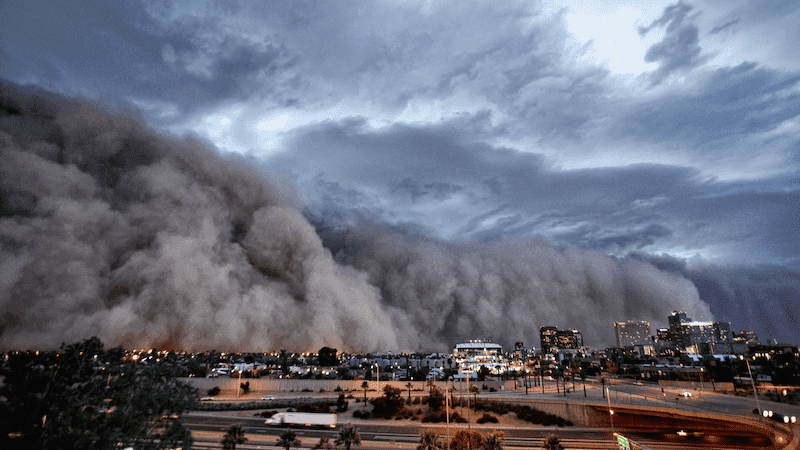Haboobs: Mile High Dust Storms That Rage Across The Desert
Haboobs, also known as dust storms, are a weather phenomenon that occurs in arid and semi-arid regions around the world. They are characterized by a large, dense wall of dust and debris that moves across the landscape, often accompanied by strong winds and reduced visibility. While haboobs can be visually impressive, they can also be dangerous to both human health and the environment.
What is a Haboob?
The term "haboob" comes from the Arabic word "habb," which means "blowing." The word was first used in English in the late 1800s to describe dust storms in Sudan and has since been used to describe similar weather events around the world.
Haboobs typically form when hot, dry air near the surface of the earth rises and meets cooler, moister air higher up in the atmosphere. This creates a temperature and pressure gradient that can cause strong winds to develop. As these winds move across the arid landscape, they pick up dust and debris from the ground, creating a massive dust storm.
Where Do Haboobs Occur?
Haboobs can occur in many parts of the world, but they are most common in arid and semi-arid regions such as the Sahara Desert in North Africa, the Middle East, and the southwestern United States. In the United States, haboobs are most commonly observed in Arizona, New Mexico, and Texas, where they are often associated with monsoons.
Australia is another country that experiences haboobs, particularly in the eastern and central regions. These dust storms are typically caused by drought conditions and can have a significant impact on air quality and human health.
Health Hazards of Haboobs
Haboobs can pose serious health hazards to people who are exposed to the dust and debris. The dust can irritate the eyes, nose, and throat, and can exacerbate respiratory conditions such as asthma and bronchitis. In addition, the dust can carry harmful.
To protect themselves from the health hazards of haboobs, people should avoid outdoor activities during a dust storm, and should wear masks or other protective gear if they must go outside. In addition, it is important to stay informed about weather conditions and air quality levels, and to seek medical attention if you experience any symptoms related to dust exposure.
Environmental Aspects of Haboobs
Haboobs can have a significant impact on the environment, particularly in regions where they occur frequently. The dust and debris can damage crops and other vegetation and can contribute to soil erosion and desertification. In addition, the dust can have a cooling effect on the atmosphere, which can affect weather patterns and climate.



.png)
.png)
.png)

.png)